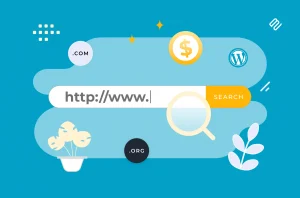You may think that company sponsorship is just a flashy way to boost brand visibility, but it’s so much more than that. In fact, strategic company sponsorship can be a powerful tool for forging effective partnerships and driving business growth.
This insider’s guide will show you how to navigate the complex world of sponsorship, from evaluating opportunities to crafting winning proposals.
Get ready to unlock the art of strategic company sponsorship and maximize its benefits for your business.
The Importance of Strategic Company Sponsorship
The importance of strategic company sponsorship can’t be overstated when it comes to maximizing brand exposure and driving business growth. Building brand awareness through sponsorship is a powerful tool that allows companies to reach a wider audience and create a positive association with their brand.
By partnering with relevant events, organizations, or individuals, companies can tap into an existing network of followers who are already interested in the sponsored entity. This not only increases visibility but also helps build trust and credibility for the brand.
Moreover, measuring return on investment in company sponsorship ensures that resources are allocated effectively. By tracking metrics such as increased website traffic, social media engagement, or sales conversions, companies can determine the success of their sponsorships and make informed decisions about future partnerships.
Strategic company sponsorship is an essential component of any comprehensive marketing strategy, offering long-term benefits for brand growth and recognition.
Identifying and Evaluating Potential Sponsorship Opportunities
Start by researching and assessing the various sponsorship opportunities available to you. Evaluating opportunities is a crucial step in developing an effective sponsorship strategy.
Consider the following when identifying potential opportunities:
1. Alignment: Ensure that the opportunity aligns with your company’s values, goals, and target audience. Look for partnerships that will enhance your brand image and resonate with your customers.
2. Reach and Exposure: Evaluate the reach and exposure that each opportunity can provide. Consider factors such as audience size, demographics, media coverage, and online presence.
3. Return on Investment (ROI): Analyze the potential ROI of each opportunity by estimating the benefits it can bring to your business. This may include increased brand awareness, customer acquisition, or sales growth.
4. Long-Term Potential: Think about the long-term potential of each partnership. Will it allow for ongoing collaboration or lead to future opportunities?
Crafting an Effective Sponsorship Proposal
Crafting an effective sponsorship proposal involves showcasing the unique value your company can offer potential partners.
To start, it’s crucial to carefully consider your sponsorship budgeting. Determine how much you can allocate towards sponsorship opportunities and strategically choose those that align with your brand objectives.
Once you’ve identified the right opportunities, focus on building strong relationships with potential partners. Clearly communicate why partnering with your company is beneficial and highlight the specific benefits they’ll receive.
Tailor your proposal to each potential partner, emphasizing how their goals align with yours and how you can help them achieve success. By demonstrating a deep understanding of their needs and offering a compelling value proposition, you increase the chances of securing successful sponsorships that drive mutual growth.
Maximizing the Benefits of Company Sponsorship
Maximizing the benefits of company sponsorships requires carefully selecting opportunities that align with your brand objectives and effectively communicating the specific value you can offer potential partners. To ensure success, consider the following strategies:
1. Measuring ROI: It’s crucial to have a clear understanding of how your sponsorship is impacting your business. Develop key performance indicators (KPIs) and track them consistently throughout the partnership.
2. Building long-term relationships: Sponsorships should not be treated as one-time transactions. Instead, focus on building lasting connections with your partners. This involves regular communication, delivering on commitments, and seeking mutually beneficial opportunities for growth.
3. Leveraging activation opportunities: Take advantage of activation platforms provided by the sponsorship to engage with your target audience effectively. Utilize social media campaigns, experiential marketing events, and other promotional activities to maximize brand exposure.
4. Continuously evaluating partnerships: Regularly assess whether the sponsorship is aligned with your evolving brand objectives and yielding desired results. If necessary, make adjustments or seek new opportunities that better match your goals.
 iance (NFPA) was formed, creating a unified democratic alliance among groups within the forest protection community. NFPA believes that informed groups and individuals, acting in a coordinated, strategic manner, can organize a strong base of public and political support to achieve positive, lasting social change and environmental protection.
iance (NFPA) was formed, creating a unified democratic alliance among groups within the forest protection community. NFPA believes that informed groups and individuals, acting in a coordinated, strategic manner, can organize a strong base of public and political support to achieve positive, lasting social change and environmental protection.


